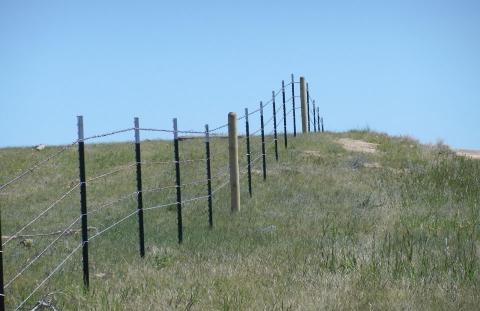Ron Jolly
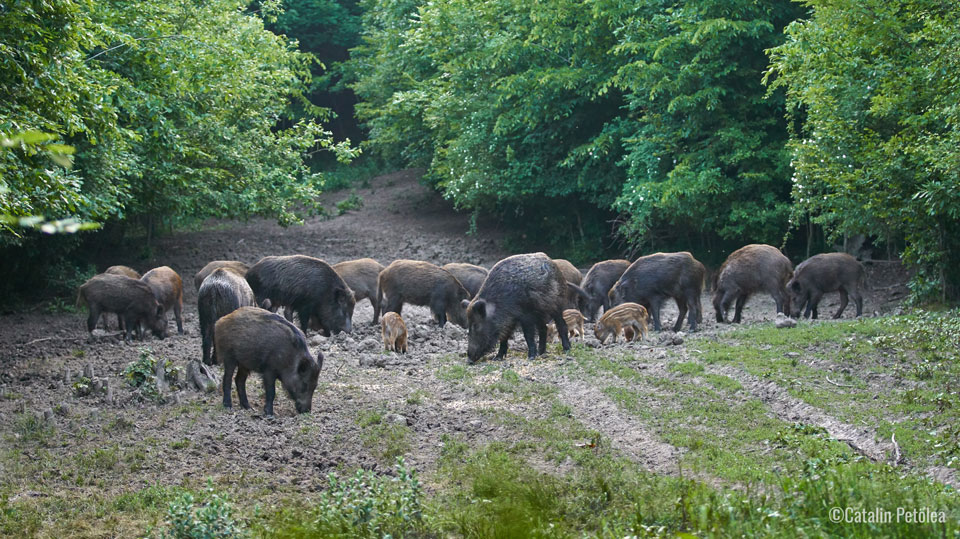
Feral hogs are not native to our land. They are invasive creatures that multiply at a tremendous rate and create havoc to native wildlife and plant communities. Left unchecked, they change the environment and your ability to cultivate it for native species.
The “pigs tore up my cornfield” lament is a common one. Feral hogs cause over $1.5 billion in damage to crops and property each year, so that is the logical cause of most concern.
What you may not know is that feral hogs pose a real threat beyond property and agricultural damage. Feral hogs can carry up to 37 parasites and 30 diseases that are transmissible to live-stock, people, pets and/or wildlife.
A Dream Come True
Steve Guy first fell in love with his “piece of dirt” in the mid-1970s. It was the best hunting club he had found. Deer and turkey were abundant. For the next 35 years Steve Guy would be content to spend his time in the outdoors on this land.
Over those 35 years much changed. Members came and went. Timber rights were leased to a large timber company. New trees were planted and they grew. The habitat evolved and matured. In time, trees were thinned and understory vegetation regenerated. Steve’s son, Andy, graduated from Auburn University, married and had children of his own. Through it all the hunting remained good and all was well with Steve Guy.
In 2010 things really changed. The planted pine timber on Matin Creek was mature and the timber company lease was about to expire. So in 2011, the harvest of mature pines began and by the end of the year 80% of the 1,800 acre tract stood bare of timber and in need of reforestation. This proved to be a blessing and a curse.
It was at this time the family who owned the property decided to sell. Two members of the club took the leap and purchased the property. Steve was invited to stay as a hunting member and in 2013 Steve was able to buy into the deal. The idea was to keep the property intact, restore the land and enhance it for wildlife.
If you love wildlife and want to improve habitat SUBSCRIBE TODAY!
The Work Begins
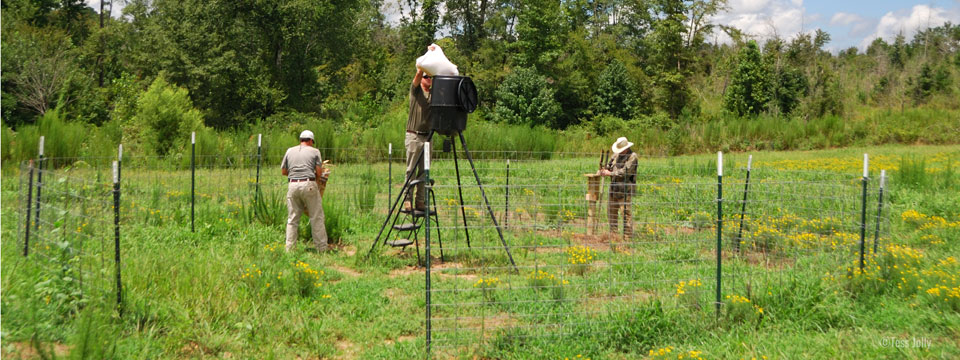
With deed in hand, Steve Guy began the arduous task of converting a 600-acre cutover into a viable tree farm and recreational property. With 30 years of experience as director of Alabama Farmer’s Federation Wildlife, and Forestry Division under his belt, the decisions seemed simple.
Son, Andy, worked as Auburn Work Unit Manager for the Alabama Forest Commission and had a degree in forestry. He had already done the work of planning and planting trees on the other two thirds of the property.
“We knew what we needed to do,” said Steve. “We just needed to make a start. I felt confident we were on a good path because we knew we could work with the other owners for a common goal. We liked hunting together and we all shared the same philosophy that wildlife does not know or respect property boundaries.” With that understanding in place, “Martin Creek Hunting Preserve” was formed.
In June of 2014 Steve and Andy chemically site prepped 410 acres of clear-cut. During September, those acres were burned to complete the site prep and in November, containerized long-leaf seedlings were planted.
Panic Attack!
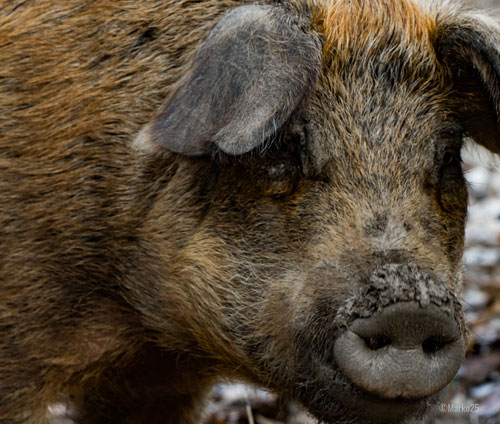 “By the spring of 2015 I was feeling pretty good about where we were with our program,” said Steve. “The mild winter and ample rain had been kind to the planted longleaf seedlings. My mind had shifted to fixing roads, drainages, and hunting turkeys.”
“By the spring of 2015 I was feeling pretty good about where we were with our program,” said Steve. “The mild winter and ample rain had been kind to the planted longleaf seedlings. My mind had shifted to fixing roads, drainages, and hunting turkeys.”
“One morning in early April I climbed a hill on the plantation to listen for a turkey in the hard-wood drain below. By the time it got light I had not heard a gobble so I decided to change locations. On my walk back to the vehicle I noticed brown tops of young seedlings lying on the ground. That got my attention!”
“I could not believe my eyes! The pines were almost totally gone! Only the brown needles remained. In a panic I changed to another area. Same thing! Almost all the seedlings lay on the ground with the roots missing. I called my son Andy and we did a thorough survey. The results were shocking.”
Reality Check
“There were some dark times after that day in April when we realized hogs had cost us over $125,000” said Steve. “We knew we had hogs. They first appeared in the area around 2005. There was rooting and some damage to our food plots but nothing serious. We thought we were keeping them in check by shooting them on sight. Were we ever wrong!”
After much consideration a plan to start over was devised. It called for total re-planting of 410 acres which required another chemical site prep and burn. The plan also called for serious hog control.
The plan included the construction of corral traps distributed over the entire 1800-acre tract and built to Jager Pro standards. Spin feeders would be set up in each trap. Trail cameras would be used to monitor the feeders for hog activity and we purchased one Jager Pro M.I.N.E. camera and trap gate.
Payback Time
“We initially set up six traps,” said Steve. “We began catching hogs in the traps but it required constant monitoring of trail camera photos to identify the number of hogs in a sounder.”
“Our efforts to shoot hogs day and night were intensified. Care was taken to not disrupt the hogs patterned on feeders. The numbers began to pile up but it was exhausting work, but we had no choice! Time to re-plant our trees was fast approaching and we could not afford to lose them again.”
In the fall of 2015 the same 410 acres were site-prepped and burned. In December the second crop of containerized long-leaf seedlings was planted. At the time of planting over 175 hogs had been dispatched on the Martin Creek property.
Become a Better Trapper
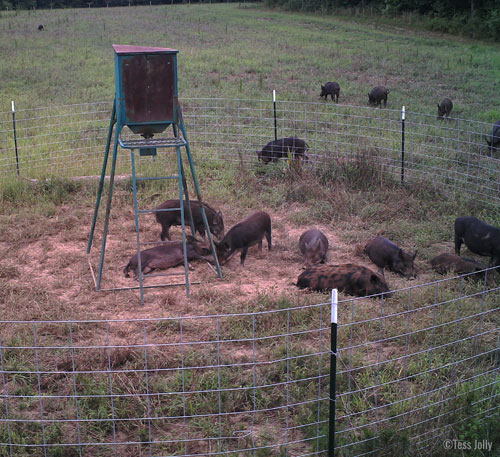 Barry Estes is owner of Alabama Hog Control, and an authorized Jager Pro Dealer. Estes serves clients all over Alabama by providing trapping services, equipment and advice. Estes also offers hunts for clients interested in night hunting hogs with rifles fitted with thermal optics. Contact him at www.alabamahogcontrol.com.
Barry Estes is owner of Alabama Hog Control, and an authorized Jager Pro Dealer. Estes serves clients all over Alabama by providing trapping services, equipment and advice. Estes also offers hunts for clients interested in night hunting hogs with rifles fitted with thermal optics. Contact him at www.alabamahogcontrol.com.
“Trapping is far and away the best way to remove large numbers of hogs from your property,” says Estes. “If you want to make a dent in the hog population, trap-ping is where you begin.”
“Many landowners casually approach trapping feral hogs. Small traps with gates tripped by the pigs catch hogs. They also educate hogs that are around when the gate closes. The most effective trap is a large corral trap with a gate that closes when the entire sounder is inside the trap. The technology developed by Jager Pro eliminates most of these problems. The gate is dropped by a human being making a conscious decision that the entire sounder is inside the trap.”
Estes offers these tips to help you be more efficient with your hog trapping efforts.
Becoming a GameKeeper is not just the best way to produce great hunting… it’s the best life! SUBSCRIBE TODAY.
Location, Location, Location
Choose a location near water, food, or bedding frequently used by hogs. Consider access - getting equipment in and hogs out easily is important.
Pre-baiting
Pre-baiting with corn helps get hogs comfortable with the area and dependent on the food source. Monitor the site with a trail camera to determine the number of sounders using the site and the number of hogs in each sounder.
Keep Track of the Pigs
Determine the number of sounders using a site. Determine the number of hogs in each sounder. Document the time each individual sounder is visiting the site.
Time to Catch
Always trap the sounder least likely to disturb or educate other sounders using the site. Once they are trapped, dispatch and remove those pigs from the area as soon as possible.
Retrieving the Hogs from the Trap
Remove the hogs from the trap as soon as possible. This reduces the chance of other hogs hearing or seeing trapped hogs and becoming educated. It also reduces the amount of feces in the trap.
Clean the Trap
Remove all feces from the trap before leaving the area. This will speed up your next catch.
Baiting the Trap
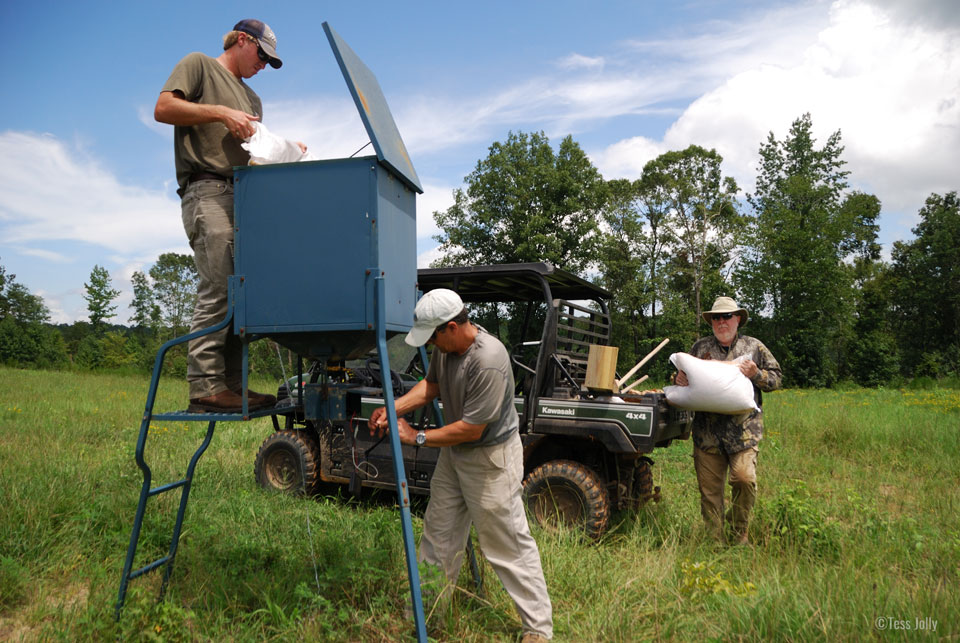
Use a spin-feeder to dispense corn. Set it to spin an hour before dark to eliminate day creatures from eating all your bait. Do not put corn in piles. Hogs fight for position and because of the competition they will run each other out of the trap.
Battery Life and Managing your Time
Always make sure the batteries in your camera and gate are charged and ready. Running out of batteries at the wrong time can mean an entire sounder educated and your planning gone for not. Check batteries and feeder level each time you visit the trap. Inspect the trap for damage each visit. Only visit the trap when necessary. This cuts down on human scent.
Shooting Pigs in the Trap
A .22 bullet behind the ear will drop even the biggest hog. Shoot the hogs from an angle that directs your line of fire away from the camera and gate but into the animal’s brain.
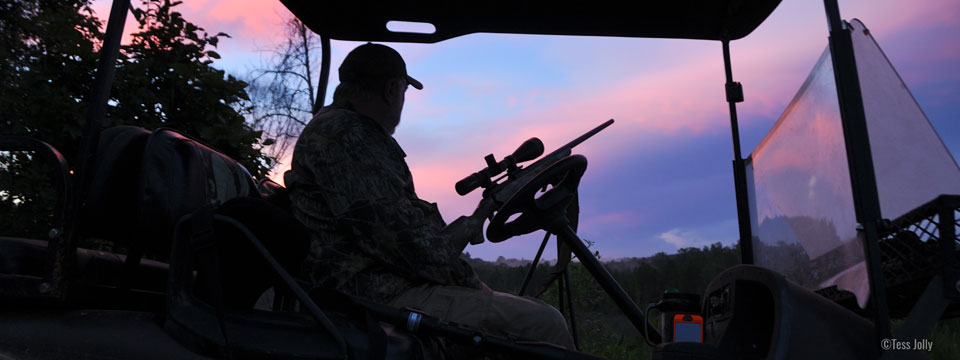
Close
It is obvious that feral hogs have no place in the landscape of wildlife management. The lesson learned is, “You can’t barbeque your way out of a feral hog invasion!” Removing them from your property is expensive, tedious work that requires dedication and all-out commitment. Sound advice, the right equipment and cooperatives can greatly reduce feral hog impact on your property and help your land and waterways recover to host the wildlife you choose to live there.
If you are fortunate and do not have hogs, keeping it that way is a complicated task that requires diligence and planning. Feral hog populations are growing exponentially all across the United States. More hogs mean more territory is required for them to do what hogs do; root, pilfer and destroy in search of food. If you want to keep your property completely hog free, my advice is build a fence!

















